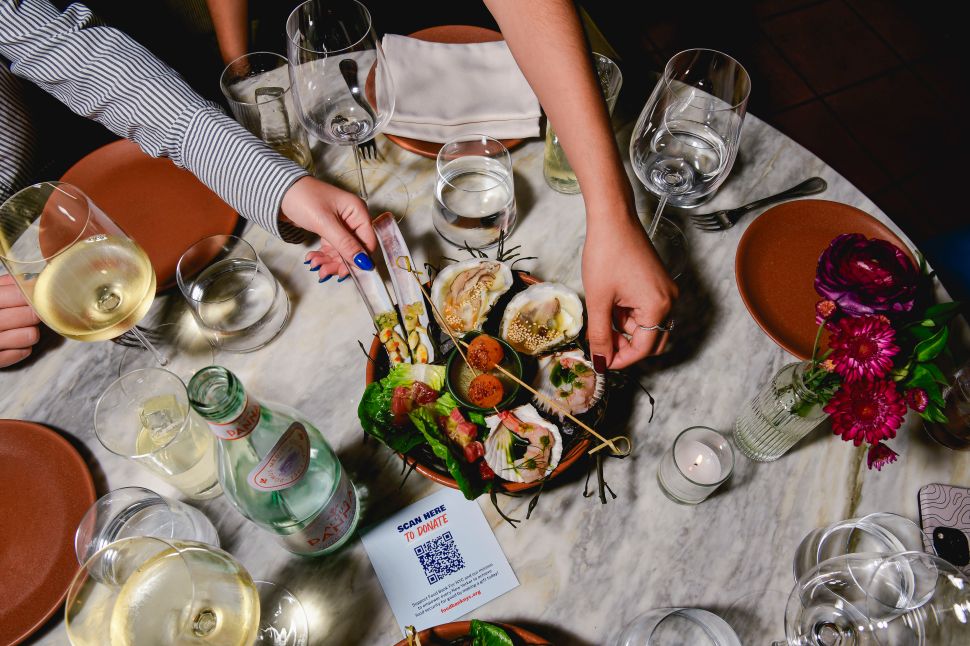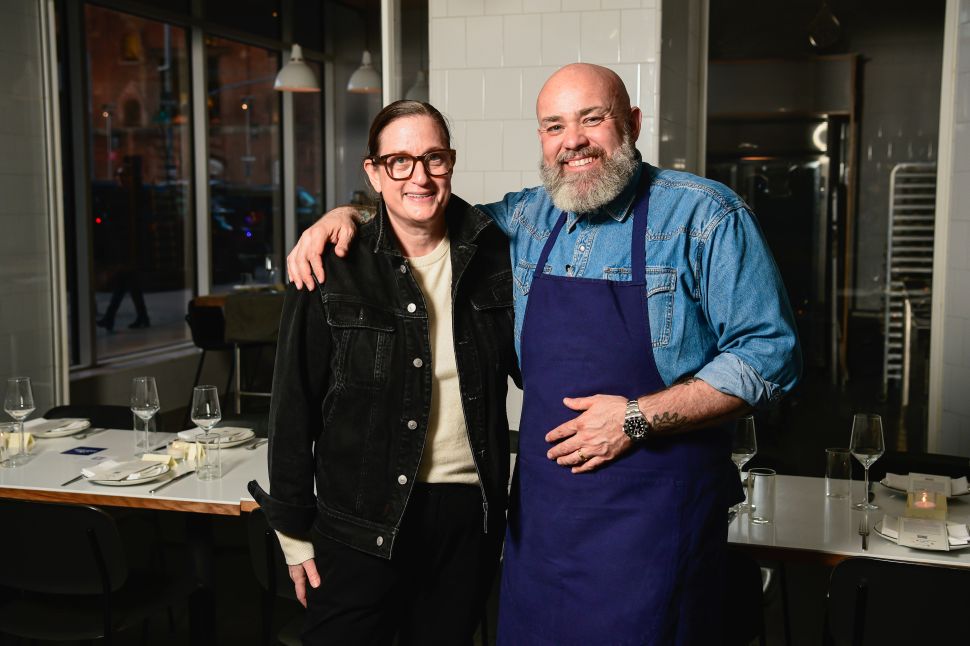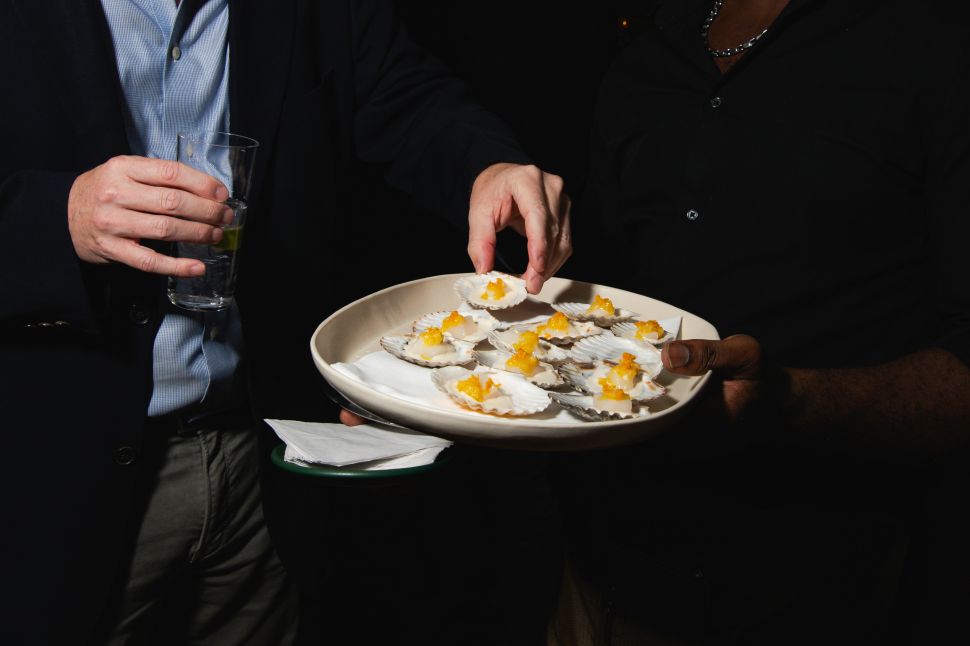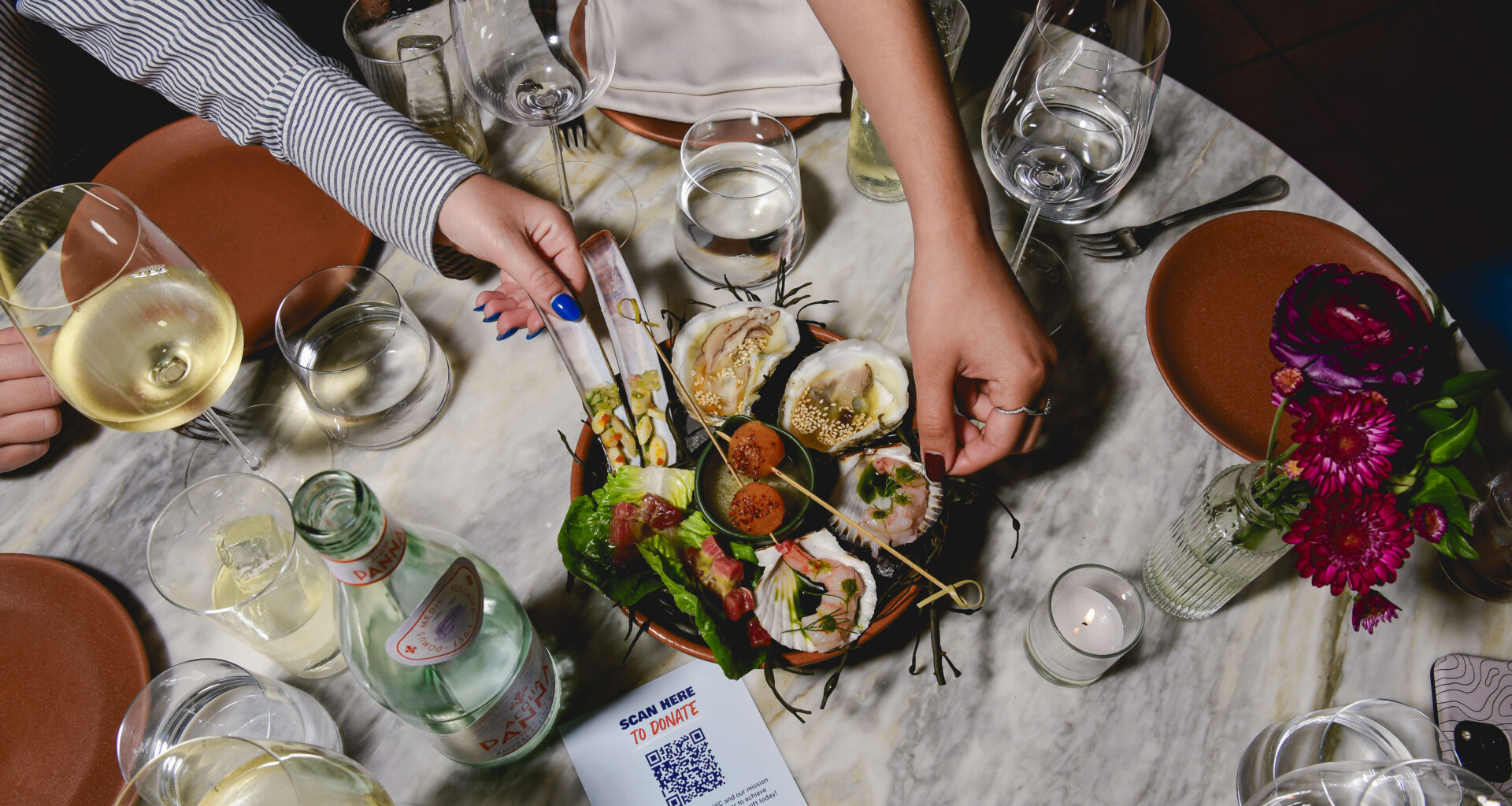 Miami’s Nando Chang of Itamae AO cooked alongside Stefano Secchi of Massara and Rezdôra at an Eat for Good event earlier this year. MAX FLATOW PHOTO
Miami’s Nando Chang of Itamae AO cooked alongside Stefano Secchi of Massara and Rezdôra at an Eat for Good event earlier this year. MAX FLATOW PHOTO
As the wealthiest city in the United States, it’s little surprise that New York City’s philanthropic scene is one of the most robust in the nation. On any given weekday night, you can find fundraisers for everything from the ballet to the homelessness crisis, on scales both intimate and gala-large. But the sheer number of charity events poses problems for both those trying to raise money and those with the money to spend. For the former, how do you make your evening unique in a sea of so-called rubber chicken dinners? And for the latter, how do you choose which event feels like the best investment of your time and funds?
But New York’s largest hunger relief organization, Food Bank For New York City, seems to have cracked the code on both fronts. Its newest dinner series, Eat For Good, is not only raising significant funds to help feed some of the estimated 1.4 million hungry New Yorkers, but attracting a crowd that doesn’t typically hit the charity circuit, as well. So what sets these events apart from others within the category? Aside from a level of intimacy and community not found in other fundraising dinners, it’s damn good food, as well.
Eat For Good, which launched just last year, pairs a high-profile New York-based chef with an equally renowned pal from somewhere else in the nation. The inaugural year included Hillary Sterling (Ci Siamo) with pasta legend Nancy Silverton of Mozza Restaurant Group, among other duos, and all-in raised enough funds to cover over 1.2 million meals for food-insecure New Yorkers. 2025’s season kicked off with two more pasta masters—Evan Funke (Felix in L.A.) and Missy Robbins (Lilia, Misi)—as well as Miami’s Nando Chang of Itamae AO cooking alongside Stefano Secchi of Massara and Rezdôra. The year will close out with one last dinner on November 5, which is perhaps the most anticipated of the entire year: Savannah’s James Beard Award-winner Mashama Bailey (The Grey) and Kwame Onwuachi of Tatiana, a Beard-winner himself.

 Evan Funke and Missy Robbins.
Evan Funke and Missy Robbins.
And while the incredible star power in the kitchen may be the biggest draw to the Eat For Good events, there are, of course, other chef-driven charity dinners in New York. What’s made this series so successful, even in its first two years, are a few tweaks to the typical model. First is the size: these dinners aren’t held in cavernous hotel ballrooms, but in the more intimate surrounds of restaurants. Here, diners have the opportunity to not only meet the chefs, but make friends with other guests. “It sounds so corny to say it this way, but we wanted to set a table where people could actually have a conversation,” Matt Honeycutt, chief development officer of Food Bank For New York City, tells Observer. “If you’re in a room of 500 people for a big gala event, you’re not talking to anybody. You’re not learning anything. You don’t remember anything. But if you can put them at a smaller table and they can make connections, maybe it leads to something later.”
Earlier this fall, I was lucky enough to attend the Chang-Secchi dinner, held at Massara, and one of my favorite parts of the evening was the cocktail hour, where strangers became friends over specialty Negronis and passed canapés that included memorable bites like savory cannoli made with brown butter, corn and black truffle.

 The passed canapés were a highlight at the Massara event. MAX FLATOW PHOTO
The passed canapés were a highlight at the Massara event. MAX FLATOW PHOTO
And that, of course, leads us to a discussion of the food: these collaborative, multi-course meals are truly a once-in-a-lifetime experience because these chefs are almost never in the same kitchen. At my dinner, highlights included a crudo plate with five different preparations, as well as a unique pasta fredda with Peruvian lobster sauce and uni—a dish that combined the expertise of both chefs beautifully and very deliciously. And diners can expect a similarly explosive melding of talents next month when chefs Bailey and Onwuachi combine forces. “Chef Mashama is a friend,” says Onwuachi. “And this will be the first time we are truly collaborating on a menu. I don’t want to give anything away, but it’s gonna be fire.” And for Bailey, both cooking with Onwuachi and volunteering with the Food Bank has been a long time coming. “I began my cooking career in NYC, and I remember seeing the Food Bank trucks around the city,” she tells Observer. “Even back then, I wanted to know what they did and how restaurants could get involved and support their efforts.”
While a night out at an Eat For Good dinner is certainly a glamorous evening, the reason for the event is because so many New Yorkers can’t even afford a dinner at home. And for the chefs involved, helping to alleviate this hunger is just as important as the chance to cook with revered colleagues. “Food insecurity is something that I dealt with as a kid, so I am happy to give my time for something I know a lot of people suffer with in silence,” says Onwuachi. “It’s not always obvious: people don’t want you to know they can’t afford to eat, so they may not be asking for the help they need. Supporting organizations like Food Bank for NYC is key to the issue because they bring awareness and feed the hungry.”
The November dinner may be the last on the calendar for 2025, but Honeycutt and the Food Bank have big plans for next year already. “We joked the other day it was time to get a bigger boat,” he says with a laugh. “But we’re looking to add a little bit of a larger event in the fall of next year, so we can broaden the number of folks that can come in. That means probably having more than two chefs for that one.” And there are a myriad of ways volunteers can support the Food Bank even apart from the dinners, from volunteering at their Bronx warehouse to helping out at pop-up pantries across all five boroughs.
All of these efforts also help to form community because, as Bailey told me, food is a connector. “Any event that combines breaking bread together at a table is important because you can share ideas and grow as individuals,” she says. “An event like Eat For Good where people can come, donate, share and grow is how change happens. This event can demonstrate change.”

